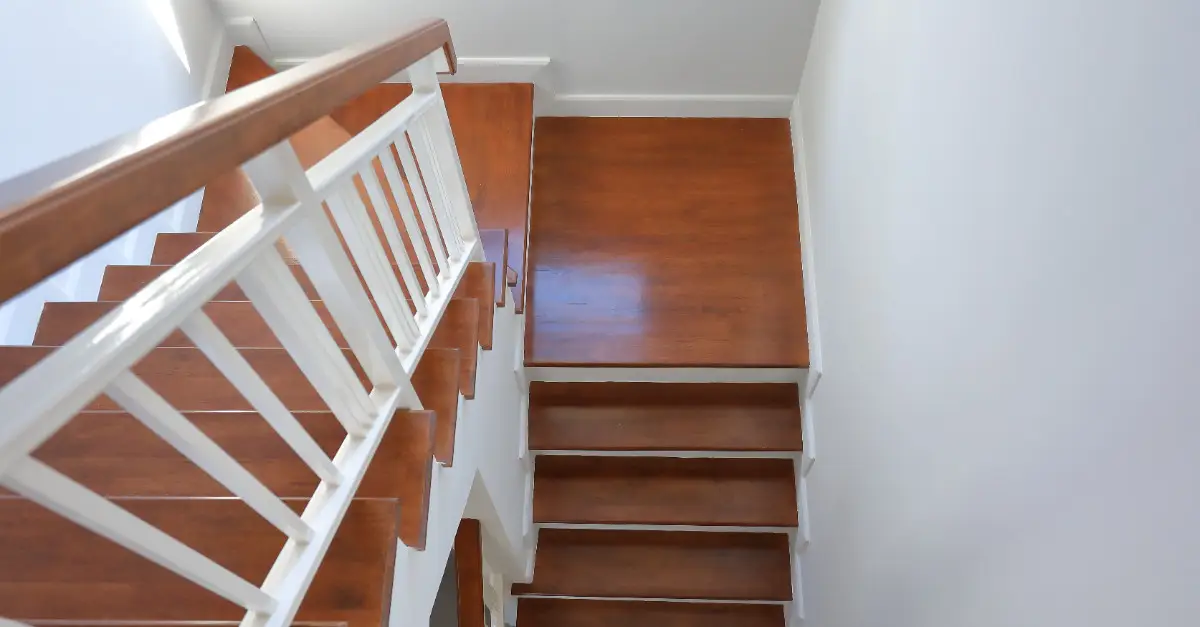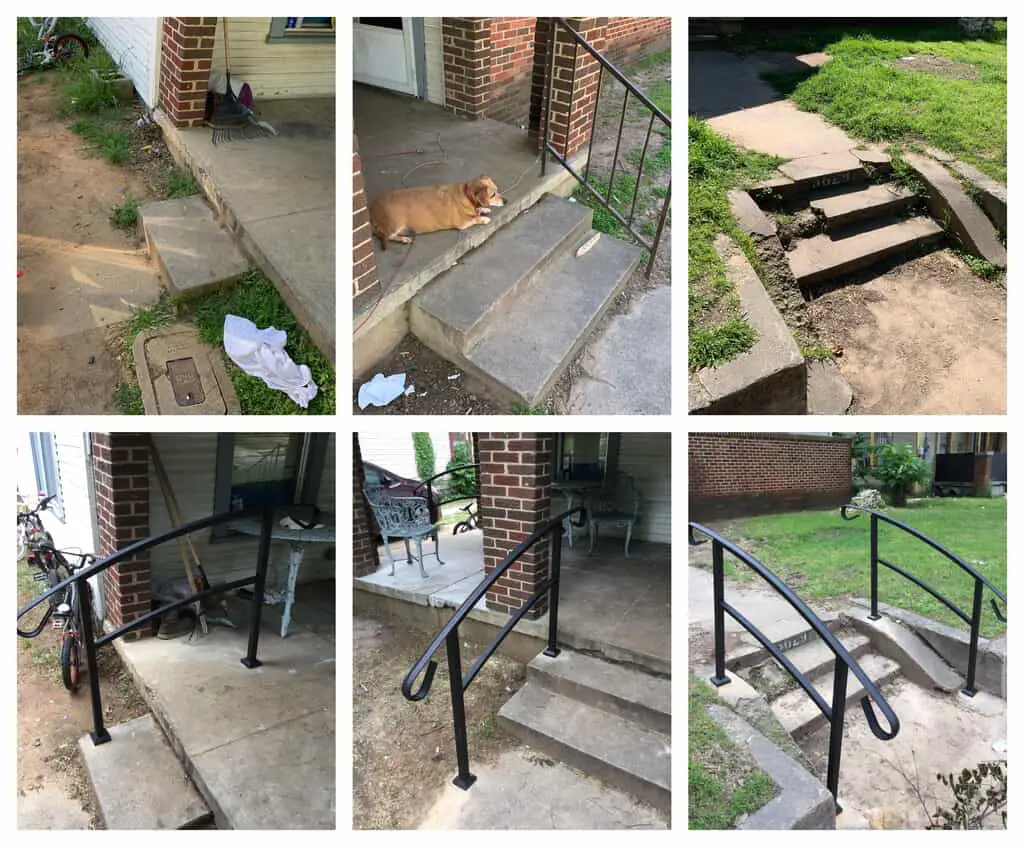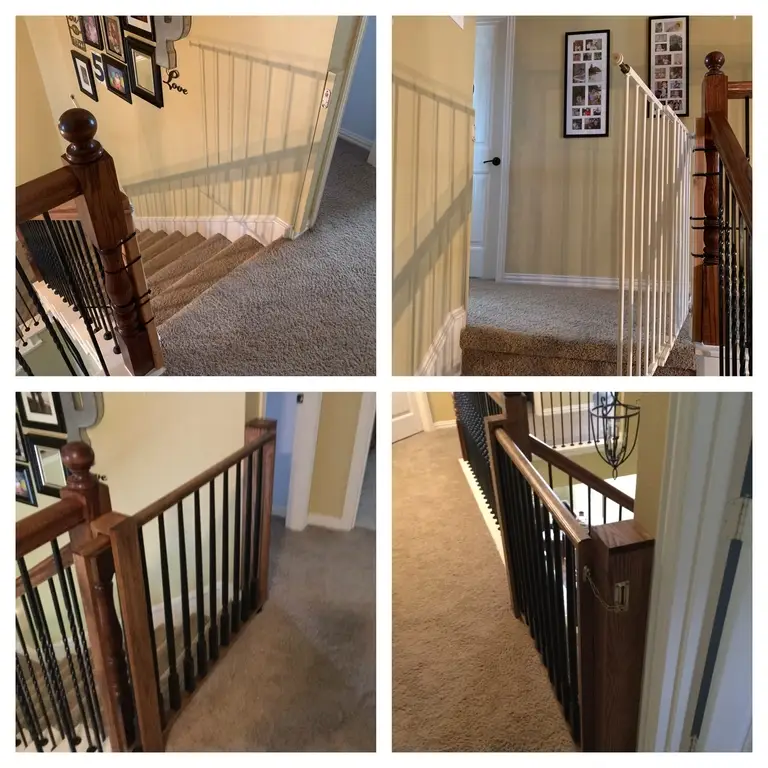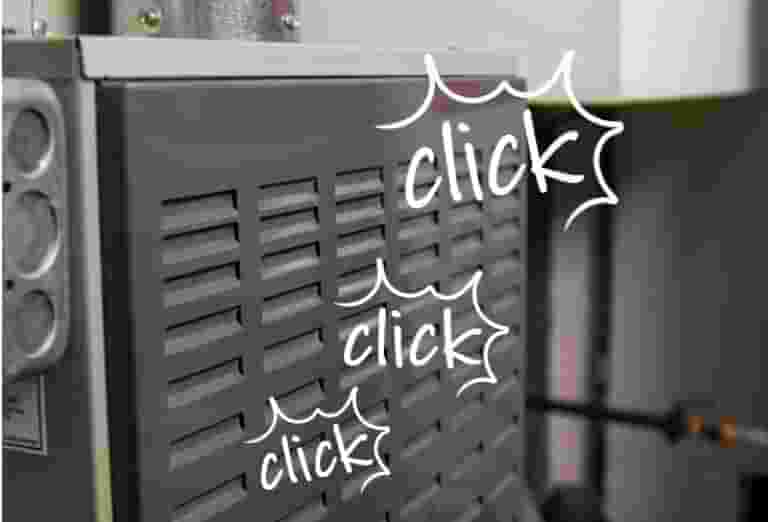For most people, going up and down the stairs is a muscle memory activity that we don’t have to think about at all. We use staircases numerous times per day while our minds are completely preoccupied with other matters. If a problem like a sagging tread or wobbly railing develops, we might notice it at first, but it doesn’t take long before we subconsciously avoid the trouble area. The issue with that is neglecting those smaller indications that you might need a stair repair in Dallas, which can lead to much bigger problems or even safety issues posing a threat to your household.

Your house is built to last, but of course, it can’t stay in excellent condition without occasional repairs here and there, and your staircase is certainly no exception to that rule. It takes a lot of abuse from people thundering up and down, sometimes dozens of times per day, so it’s not surprising that you will need to rely on a Dallas handyman to repair stairs in your home. Making it necessary to take care of issues such as squeaky steps, loose balusters, a warped stair stringer, and other problems that make your home less comfortable and safe. That applies to steps in your outdoor living space as well as indoors.
At Mr. Handyman of Dallas, we’ve earned a reputation as the go-to experts for stair repair in Dallas. Our commitment to excellence, coupled with years of experience, sets us apart from the rest. Our skilled technicians are well-versed in a wide range of repair techniques, from addressing structural weaknesses to enhancing the overall aesthetics of your staircase. We understand each home is unique, and our solutions are tailored to your specific needs. What truly distinguishes us is our steadfast dedication to quality and safety. Our professionals utilize industry-leading tools and techniques to deliver durable, reliable results that stand the test of time. When you are ready to have your staircase restored to attractive, safe, solid condition with help from your local, qualified Dallas handyman, give the service professionals at Mr. Handyman of Dallas a call! We have the experience and skill to take care of your entire residential or commercial property with reliable service and effective, long-lasting repair solutions. Don’t settle for anything less than when it comes to your home. Experience the difference that our experts can make. Contact us today and take the first step towards transforming your stairs into a masterpiece that complements your Dallas home’s charm.
Why You Need Mr. Handyman’s Stair Repair in Dallas, TX
Even homeowners who love to diligently care for their property sometimes ignore indications that their property needs stair repair in Dallas. Homeowners and business owners may be hesitant to call a professional to repair stairs because they aren’t sure if their problem is really all that bad. Or they may just hope it goes away on its own. Unfortunately, issues caused by damage and deterioration won’t go away. Instead, they continue to slowly worsen over time until a relatively minor problem has turned into a major, time-consuming hassle or a safety hazard.
By calling our handyman team to take care of your stair repair in Dallas before it gets to that point, you ensure cost-saving as well as time-saving service, which will give you peace of mind as it’s less stressful. Our experts can fix everything from staircase railings to the entire staircase, ensuring the finished results shine with beautiful materials to enhance your curb appeal or interior aesthetics.
Here are some warning signs that indicate you need Mr. Handyman’s stair repair services to fix the steps in or around your place
Squeaking or Groaning Noises
If they groan or squeal in protest when they’re stepped on, it’s not you—it’s them. Creaky stairs are one of the most common problems our experts are called to deal with, and that’s understandable, considering how annoying it is to not even be able to creep downstairs without alerting your entire family that you’re up to something.
This happens to all wooden staircases at some point, and most of them are made with at least some wood components. Whether indoor or outdoor stairs, over time, treads start to pull loose from stringers, or gaps form between treads and risers, and as a result, you end up with a squeaky stair tread. That’s fortunately a fairly easy task for your stair repair in Dallas.
We’ll secure your tread by nailing it back down, filling in the gap with special materials to stop the noise, or replacing a warped board altogether so you can get down your steps for a midnight snack undetected by the rest of your household.
Crumbling or Softened Wood
Any wooden structure that suffers from an elevated moisture content due to excessive water exposure is vulnerable to rotting, and wooden staircases are definitely no exception. As you would expect, this particular problem is a far more common situation causing a stair repair in Dallas, especially for structures in an outdoor space, like your deck, that are exposed to environmental conditions like moisture from rainfall and humidity, but it’s certainly not unheard of indoors if there’s a roof leak, plumbing leak or some other type of moisture exposure.
Rotten wood softens and crumbles apart, so it can be a major hazard on hardwood stairs because it weakens the supporting structure and can cause the entire structure to collapse if it’s neglected long enough. Wood rot can spread to other components of your house, such as interior trim or even the wooden frame of the building, and some types can even travel over masonry surfaces such as brick or plaster. It’s vital to deal with it before it spreads.
Our team will deal with the wood rot and water-damaged materials. We will then use a mixture of materials during our stair repair services to ensure your wooden structure is returned to its former toughest materials, combatting future rot and damage and ensuring safety.
Cracked or Loose Treads
In most types of staircases, each tread is an individual piece in the structure. Concrete steps, on the other hand, are typically poured together as a single unit. The individual treads are the parts that are constantly coming into contact with people’s feet and bearing their weight, so it’s understandable that they are likely to suffer damage over time, needing an expert stair repair in Dallas for issues like cracks.
While minor cracks in concrete aren’t usually a big cause for concern, cracked or broken stair treads are a more serious problem. The damage can put a strain on other parts of your structure and cause damage to worsen over time. But the uneven surface also presents a hazard that presents a threat to cause someone to trip, stumble, or fall down your steps—or get jabbed in the bottom of their foot with a huge splinter. Our professionals for your stair repair in Dallas will take out your broken tread, replace it with new, solid material, secure it with adhesive materials, and then refinish it, protecting wood from splitting but also ensuring the repaired area is in perfect visual harmony with the rest of your structure.
Loose Railings
Does your handrail or newel post shake and wobble if it’s touched? That’s obviously a bad sign since they are there to help you steady yourself, and they can’t do that if they’re not firmly in place. Newel posts are the pillars at the bottom, and in some cases, the top, of your structure that anchor the railings. They are often carved or otherwise decorated, but they aren’t there for appearances or just to hold up the end of the railing.
In many types of structures, from porch railings to interior spaces, the bottom newel post actually exists to bear some weight to support the overall structure. While this issue is typically related to wood rot outdoors, a loose newel post or weak metal railing indoors may be caused by impact damage, broken balusters, or frequent pressure that has caused screws or nails to work loose. Our team of experts will repair as well as replace all components that aren’t stable, ensuring that your staircase is safe once more during our stair repair in Dallas. Using only top-notch sturdy materials, fixing everything from balusters, newel posts, or stair spindle repairs, ensuring your handrailing is safe once more.
Damage from Pets or Insect Infestations
Dogs will be dogs, just like cats will be cats—and sometimes that means parts of your staircase get chewed or scratched to bits in a surprisingly short span of time, leaving your house in serious need of professional services for a stair repair in Dallas. However, unwelcome insect invaders can also have a negative effect on your structure, particularly the most destructive range of species that can wreak havoc, like carpenter ants and termites. Your Dallas handyman can replace damaged wood once your pest infestation has been evicted for good.
Other Kinds Of Stair Damages To Watch For:
Your staircase is more than just a functional decorative element because it connects your home’s levels. With that in mind, it’s imperative not to ignore small issues, letting them become big problems. Keeping an eye out for this range of issues can ensure longevity to your structure:
- Cracked concrete stairs
- Uneven steps
- Minor holes on
- Loose or missing individual balusters
- Frayed carpeting
- Stringers with holes or cracks
- Stair carriages are not connected securely
- Stone newels or wooden newels are damaged
- Rusty metal elements
- Missing stair railings
No matter the materials or staircase design, if you notice any of these issues, it’s time to prioritize the repair to maintain both the structural issues and the beauty of your space as well. Our team will ensure only the highest quality and strongest materials during repairs. Let us help you take that step towards a safer, stunning staircase that enhances your space.
We're Your Local Dallas Stair Repair Experts
Maintaining a residential or commercial property and taking care of all the tasks that need to be done, such as needing to repair stairs, is not easy. But with Mr. Handyman of Dallas on your side, local homeowners and commercial property owners can relax and put their trust in our expert team to ensure repair, maintenance, and installation tasks are handled effectively and efficiently with top-quality workmanship.
Our handyman professionals do much more than just stair repair in Dallas. Property owners can count on our experts for a wide range of improvement jobs, from door installation services and deck repair to power washing and gutter services. We also understand that commercial properties may have unique needs that go beyond what you would find on a typical residential property, and we can handle your commercial handyman needs with skilled craftsmanship as well.
Some of the top reasons we are hired time and again:
- One simple call, with easy scheduling, provides all your handyman services
- On-time arrival, every time
- We ensure the job is done right the first time, offering a workmanship and parts guarantee
- Offering a wide range of repair, maintenance, and improvement services
- All our technicians have an average of 10 years of experience
- Every technician has full background checks and is fully insured for your safety
- We promise to clean up after every service call
- We take customer satisfaction seriously and ensure that we always strive to exceed your expectations
Elevate your home with the expertise of our professional technicians. Trust us to redefine your space and ensure a safe home or business with our stair repair in Dallas, TX. Let us help you ensure your space is repaired safely and that it mirrors your style and comfort with our stair repair services. Your safety and comfort are your top priority. Contact us today, and let us show you the handyman difference we offer.
Frequently Asked Questions About Our Stair Repair In Dallas, TX

What Are the Components of a Staircase?
We all know what different stair types are, but some of the names for stair parts aren’t as commonly known.
Here are the names of the different components! This way, you’ll have an easier time describing the problem to your professional expert, ensuring they understand why you need a stair repair in Dallas:
- Stair Treads: These are the boards that form the flat surface of each step, where our feet land when we’re going up or down the structure.
- Stringers: These run along the sides (and, in some cases, under the middle) of the structure from top to bottom, and they are what support the treads. They come in two basic styles: open stringers have treads and risers nailed directly on top of them, while closed stringers have notches in the side that treads slot into.
- Risers: Also called kick boards, these parts cover the vertical part of each step, connecting the back of a lower step to the front of the next highest one. Some structures don’t have risers at all.
- Newel Posts: These are vertical pillars at the bottom, and sometimes top, of a staircase that holds up the railing and also bears some of the weight of the overall structure.
- Stair Railing: The handrail component that runs along the staircase at about waist height for people to grasp and steady themselves while traversing the structure.
- Balusters or Spindles: Vertical posts that hold up the railing. Spindles are attached to another rail at the bottom, while balusters rest on their own individual plinths or bases on each step.
- Stair Landing: A flat area between two parts of a staircase where the structure changes direction.
Does My Staircase Violate Local Building Codes?
When constructing a new staircase, there are Texas building construction codes that need to be followed in order to ensure the structure is safe to use. But if your structure was built a very long time ago, or the person who installed it simply didn’t follow the rules, it may not be in compliance with municipal and state codes. Aside from the obvious issue that a non-compliant structure could cause injury, you may have difficulties selling, renting or insuring a building that is not up to code. Some of the issues that could violate Texas building codes for staircases include:
- The structure is too narrow
- The grade of the structure’s rise is too steep
- Each individual step is either too high or too low
- Steps are not uniform in height or size
- No handrail or the railing is too low
Your handyman may be able to correct some of these problems with the right strategy for your stair repair in Dallas, but in many cases, it will be necessary for us to completely remove the existing structure and put in a new replacement that meets or exceeds all municipal and state building requirements. Our skilled team of experts has the experience and expertise to know what is expected and ensure the structure is fully compliant so you don’t have to worry.
What Causes the Need for a Stair Repair in Dallas?
When it comes to any stair repair in Dallas, the problems for an interior structure are usually related to wear and tear damage that gets incrementally worse over time or prolonged exposure to environmental conditions. Staircases take a lot of abuse over the years, and eventually, some components will need replacement or reinforcement. For structures that are outdoors, the most common issue by far is moisture damage from harsh weather and humidity. That’s especially true for wooden structures, but even metal and concrete are not impervious to the effects of excessive moisture.
When Your Property Needs A Stair Repair In Dallas, Count On Our Pros To Get It Done Right!

If you are a resident of our Dallas service area, including parts of the greater Dallas area, such as University Park, Farmers Branch, or Addison, you can make use of the expert handyman services provided by the team of professionals at Mr. Handyman of Dallas.
Ready to schedule an appointment for service? Call us today to chat with our friendly customer care staff and choose an appointment time that’s convenient for you, or find out more about what we can do to enhance your residential or commercial property with maintenance, installation, improvement, and repair services for everything from custom built-ins to a stair repair in Dallas.
 Click to call
Click to call


